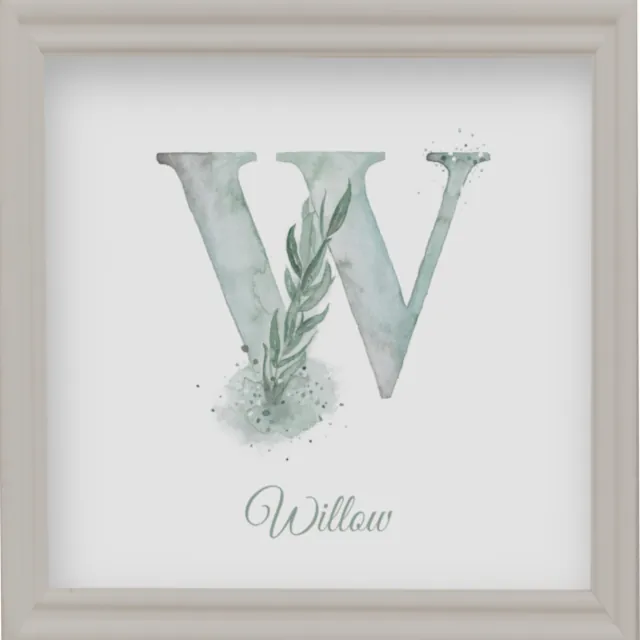Baby Name Willow: Meaning Beyond the Deciduous Tree

You don't have to be a botanist to know the meaning of this name. Willow trees are a common sight throughout the temperate regions of the Northern Hemisphere, and thanks its medicinal uses and other practical applications, the willow has been considered a valuable tree for humans since ancient times.
But there's more to the baby name Willow than its arboreal meaning. Aside from – or perhaps because of – its botanical value, the willow tree has also served as an important symbol in many religious and spiritual texts and teachings, turning this tree-inspired baby name into a multi-faceted moniker with layers of meaning.
Below, we'll take in-depth look at the meaning of the name Willow, drawing from the symbolism and associations the willow holds in different cultures.
Biblical Meaning
The willow tree is mentioned several times in the Bible, though some transliterations refer to "poplars" instead of "willows". One of the most famous biblical references to the willow tree is found in Psalm 137 which begins: "By the rivers of Babylon, there we sat down, yea, we wept, when we remembered Zion. We hanged our harps upon the willows in the midst thereof" [1]. These verses express the sentiments of the exiled Israelites longing for their homeland. In this context, the willow tree is associated with longing, mourning and grief.
This somber association is reinforced by the drooping branches of the weeping willow that are sometimes carved on gravestones.
In the Book of Leviticus, the willow takes on a more positive meaning. In Leviticus 23:40, willow branches are portrayed as a celebratory accessory, with Israelites being told to bring them to the Festival of Tabernacles. This tradition has persisted until the present day, with willow branches playing an important role in the annual Jewish feast of Sukkot [2].
Native American Symbolism
Willow trees are widely distributed throughout the North American continent, so it's no surprise that the willow features prominently in Native American mythology and symbolism.
In one Osage story, commonly known as "The Wisdom of the Willow Tree", a young boy seeks answers from a sentient old willow tree he calls "Grandfather" [3]. This story may or may not have served as inspiration for the creators of the Disney movie Pocahontas, in which the titular character frequently seeks advice from Grandmother Willow, a talking willow tree that offers Pocahontas guidance and wisdom as the young girl navigates the challenges and obstacles of life.
Aside from evoking wisdom, the willow tree has also been seen as a symbol of the perpetual renewal of life because of its resilience. This is why the Wyandotte Nation, a federally recognized Native American tribe, have included willow branches in their logo [4]. The willow also plays a key role in the Karuk creation story [5].
Significance in Chinese Culture
The willow tree also carries multiple meanings and associations in Chinese culture. It has, for example, been associated with spring and femininity [6], as well as the Qingming Festival. During this springtime celebration, some Chinese carry willow branches with them, while others hang willow branches on their front gates. These rituals stem from the ancient belief that willow could ward off evil spirits and bring on good luck. [7] There's also a Chinese saying that if a young person doesn't wear willow during Qingming, they will age quickly [8].
Another interesting meaning of willow emerges from the pronunciation of the Chinese word for "willow" (liu), which sounds like the Chinese word for "stay". This has inspired Chinese poets across centuries to include willows in their poems, typically in the context of love and longing. This linguistic play is also behind the Chinese tradition of using willow twigs as a parting gift to friends, a tradition that was brought to the world's attention during the closing ceremony of the Beijing Olympics.
Associations in Japanese Culture
In Japanese culture, the willow is associated with feminine beauty (like in China), but also with patience and perseverance [9, 10]. The latter is linked to the characteristic ability of the willow tree to survive even in challenging conditions, and there's a well-known Japanese saying that goes: "(like) a willow in the wind". This conveys roughly the same meaning as the English idiom "follow the path of least resistance" or "bend in the wind".
This feels particularly meaningful in the Japanese context, given the emphasis on conformity and social harmony in Japan.
Western Occultism
Remember Willow Rosenberg, the bookish-girl-turned-witch in the turn-of-the-century teen drama Buffy the Vampire Slayer, or the kind-hearted witch girl by the name Willow Park in the animated Disney series The Owl House? Or are you more of a book person? There's no shortage of witchy books featuring Willow as a given name or part of a place name.
Turn to the music industry, and you'll find plenty of examples of willow trees being associated with witchcraft there too. If you follow pop stars, the references to witchcraft in Taylor Swift's music video for Willow and her performance of the song during the Eras Tour were hard to miss.
These references aren't accidental. The willow tree has long held significance in European witchcraft and Western occultism in general, providing ample fodder for all manner of creative minds, from screenwriters to novelists to musicians. How the willow took on its witchy vibe may never be fully understood, but its age-old association with the moon [11], long-known healing properties (it contains salicylic acid, which later became to be known as aspirin), and wide distribution throughout Europe have undoubtedly played a role.
Celtic and Irish Folklore
Many Celtic myths and legends mention "sacred" or "noble" trees, often in connection with otherworldly creatures such as fairies. One tree that frequently pops up in this context is the willow. In medieval times, you could even be fined for harming a willow tree—or any other tree deemed noble [12].
In fact, the Celts held the willow in such high regard that they named one of their letters after it: sail, the Old Irish word for "willow", doubles as the fifth letter of the Ogham alphabet. Other trees that lent their names to letters of this ancient alphabet include the birch, alder, oak, hazel, fir/pine, aspen and yew, and several other trees were referenced indirectly. [13] Coincidentally, many of these trees double as modern baby names, so if you're looking for an arboreal, Celtic-inspired sibling name for Willow, try Alder, Oak(ley), Hazel or Aspen!
Aside from its mystical undertones and connection to the Ogham alphabet, the willow also carried poetic connotations for the Irish: In O'Grady's Silva Gadelica, a collection of medieval Irish tales, the willow is revered as a sacred tree associated with poems [14].
Love the Baby Name Willow?

Do you love the arboreal meaning of the baby name Willow, or one of its less overt meanings? If you think Willow is the perfect name for your daughter (or son—Willow works for boys, too), it's time to add a little personal touch to your baby's nursery!
Here at Names and Nursery, we not only explore the meanings and origins of baby names, but we also provide personalized baby name signs and wall art for the nursery.
For the name Willow, we're thrilled to offer you a digital copy of our arboreal-inspired artwork depicting a hand-painted letter "W", accompanied by the name Willow. You can grab your copy here—it's free for non-commercial use!
References
- The Holy Bible: King James Version. Thomas Nelson (2017).
- Tel Aviv University (2017), The Four Species of Sukkot Explained, last accessed on February 12, 2024.
- Bruchac, Joseph (1998). Flying with the Eagle, Racing the Great Bear: Stories from Native North America Paperback.
- The Wyandotte Nation (2024). The Wyandotte Nation homepage, last accessed on February 12, 2024.
- The Karuk Tribe Department of Natural Resources (2020). We make the world good again, last accessed on February 12, 2024.
- Venice International University. The Design of the Chinese Garden by Master Ye Fang, last accessed on February 12, 2024.
- Doolittle, Justus (1876). Social Life of the Chinese. Harper & Brothers.
- Beijing Foreign Language Press (2012). Chinese Auspicious Culture. Asiapac Books.
- Marr, Kathryn Rebecca (2015). Mirrors of Modernity, Repositories of Tradition: Conceptions of Japanese Feminine Beauty from the Seventeeth to the Early Twentieth Century. University of Canterbury.
- Lehner, Johanna and Ernst (1960). Folklore and Symbolism of Flowers, Plants and Trees. Tudor Publishing Company.
- Culpeper, Nicholas and Steven Foster (2019; based on Culpeper's original work published in 1653). Culpeper's Complete Herbal: Illustrated and Annotated Edition. Sterling Publishing, New York.
- Monaghan, Patricia (2004). The Encyclopedia of Celtic Mythology and Folklore. Facts on File.
- MacLeod, Sharon Paice (2011). Celtic Myth and Religion: A Study of Traditional Belief, with Newly Translated Prayers, Poems and Songs. McFarland & Company, Inc.
- O'Grady, Standish Hayes (1892). Silva Gadelica. Williams and Norgate.
